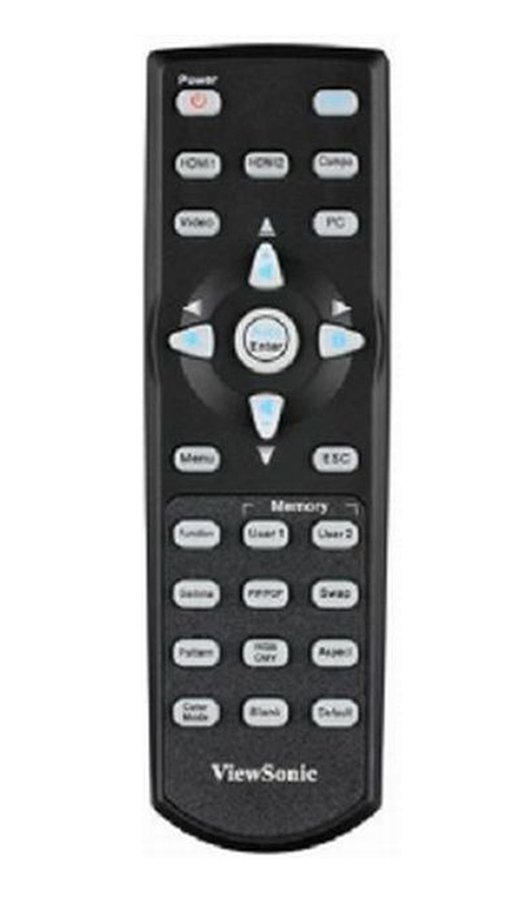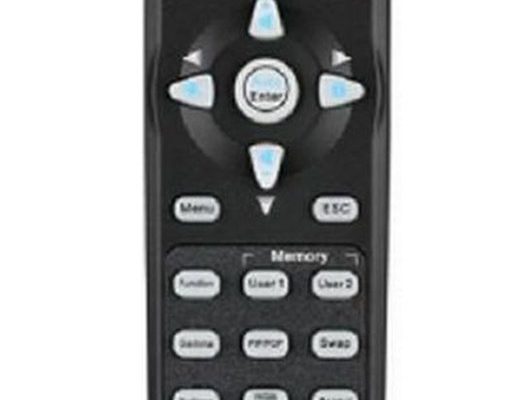
Here’s the thing: Viewsonic projector remotes pack in a surprising amount of tech, but they’re still, at heart, humble clickers. Their instructions can read like cryptic treasure maps, and making just one programming mistake can mean absolutely nothing happens—even if you’re doing everything “by the book.” I’ll walk through the most common programming slip-ups so you can sidestep embarrassment and have your projector humming right along.
If you’re new to Viewsonic projectors, let’s get on the same page. These remotes usually control everything from input sources to power and volume. But when it comes to pairing, resetting, or syncing them, there are a few gotchas nobody warns you about. Let’s break down where folks most often trip up, and how you can keep your movie night (or big presentation) on track.
Misunderstanding the Programming Steps
I’ve seen it a hundred times—a friend, colleague, or family member waves their Viewsonic remote in the air and says, “Why isn’t this working?” Nine times out of ten, the issue lives in those sneaky programming steps. The instructions look simple, but it’s the details that matter. Viewsonic remotes need their buttons pressed *just* so, and sometimes in a very specific order.
For example, if you’re trying to pair the remote to the projector, you might see a step like “Press and hold the Menu and OK buttons together for five seconds.” Here’s the catch: If you let go at four seconds, or press one button before the other, the code reset doesn’t initiate. No blinking lights, no feedback—just frustration. It’s like trying to guess a secret handshake.
Also, some remotes need to be within a certain distance from the projector during programming. You might assume you can do this from the couch, but nope—often, you need to be right in front, almost like you’re whispering a secret to your projector. This is because the infrared (IR) signal or Bluetooth pairing can be finicky. If you’re out of range, nothing happens.
Tip: Take it slow and steady. Rushing the process or “sort of” following the steps can easily lead to a failed pairing, forcing you to start over. Double-check each instruction, especially when it comes to the timing and sequence of button presses.
Ignoring Battery Health and Power Issues
You might think, “It’s just a remote! How much juice does it really need?” But here’s where things get surprisingly dicey. Viewsonic projector remotes can be weirdly sensitive to battery health—low power can mean intermittent connections, failed syncing, or no response at all.
Let me explain: These remotes often need a solid battery level to complete programming steps. If your batteries are already limping along, you might get halfway through a pairing process before things conk out. Even more confusing, you might see the power light blink once, but the code doesn’t stick. It’s like trying to drive a car with almost no gas—you might get a few blocks, but you’re not reaching your destination.
It’s wild how often people (yours truly included) forget the basics and start troubleshooting the remote, the projector, *everything*—except the batteries. Honestly, I’ve swapped batteries in moments of desperation only to have everything suddenly work. Don’t make the same mistake!
- Always use fresh, high-quality batteries.
- If the remote feels laggy or unreliable, swap batteries first before digging deeper.
- Check that they’re inserted with the correct polarity (yes, it happens to the best of us!).
Not Resetting the Remote Before Programming
Imagine you’re resetting a video game console after it glitches out. Sometimes, your Viewsonic remote needs the same kind of fresh start. If you jump straight into programming without first performing a reset, the remote might still be stuck in a weird state—kind of like when your phone gets “stuck” and needs a reboot.
Here’s how it typically works: There’s usually a combo of buttons to hold, or sometimes a tiny pinhole button you press with a paperclip. Skipping this step sets you up for all sorts of mysterious issues. Sometimes, the remote will flash but never actually sync. Or, it will sync, but only half the buttons work. It’s maddening.
Resetting wipes out any leftover codes or quirks that could block you from successful pairing or new code entry. Think of it as clearing the whiteboard before starting a new lesson—everything’s fresh and ready to go.
Insight: Don’t fear the reset. It’s not “breaking” your remote. It’s just giving it a clean slate so your next programming attempt actually sticks. Plus, a reset is way less scary than it sounds!
Confusing Universal vs. Brand-Specific Remotes
Now, I get it—universal remotes are tempting. They promise to replace every clicker in your house, including your Viewsonic projector remote. But here’s the catch: Even the fanciest universal remote isn’t always ready for prime time with Viewsonic gear.
Universal remotes handle *lots* of brands, but their generic codes don’t always match the Viewsonic’s unique commands. Sometimes, you’ll get the basics—power, volume, maybe source select—but all those handy features like keystone correction or advanced input toggles? Not so much.
Plus, pairing or programming a universal remote is a whole different dance. You’ll search for codes in long tables, manually enter them, and maybe, just maybe, you’ll get something to work. But often, people get stuck when the code doesn’t “take,” or the remote only partially works. Comparing this to the original Viewsonic remote, which (batteries willing) works with all the bells and whistles, you’ll see why sticking to the brand remote can save you hours of head-scratching.
- Universal remotes are fine for basic functions but may lack advanced features.
- The original Viewsonic remote is more likely to sync perfectly and control everything.
- If you do try a universal remote, be patient—sometimes finding the right code is trial and error.
Forgetting to Sync After Projector Resets
This one catches even the most seasoned techies. After a power outage, firmware update, or factory reset, your Viewsonic projector can sometimes “forget” its bonded remote. So, you press the remote and absolutely nothing happens. Cue the mini panic attack.
What’s really happening? Think of your projector and remote as a pair of walkie-talkies—they need to agree on a frequency (or code). If the projector resets, it may default to a fresh “channel,” and suddenly your remote is speaking a different language.
The fix? You’ll need to re-pair or re-sync the remote using the original programming steps. It can feel repetitive, but it’s absolutely necessary. This is where having the manual or a bookmarked online guide is a lifesaver.
Pro tip: If your projector suddenly stops responding to the remote after a reset, don’t panic. Just work through the pairing process again from scratch.
Using Outdated Codes or Incorrect Programming Modes
Sometimes, especially if you’re using an older Viewsonic remote or a universal replacement, you might run into code confusion. The remote’s programming may rely on a set of IR codes, and if you’re entering the wrong one—maybe copied from a random online forum—you’ll end up with a remote that lights up but doesn’t do what you want.
Here’s the thing: Viewsonic periodically updates their code sets, and not all universal remotes get updated accordingly. If you’re pulling codes from an old manual, or trying “codes that worked for my friend’s projector,” you’re rolling the dice.
Programming modes can also trip you up. Some remotes need you to enter setup mode first (often by holding a button combo). Skipping this gets you nowhere. And some remotes have multiple device buttons—TV, AUX, PROJECTOR—and if you accidentally program the code under the wrong device, you’ll end up with a remote that controls… nothing.
- Double-check the most current code list for your model.
- Always enter codes in the correct sequence and programming mode.
- If something’s not working, try resetting and starting from scratch—it’s less hassle than endless guesswork.
Misplacing the Line of Sight and Range Requirements
If your Viewsonic remote uses IR (infrared), it’s surprisingly picky about where you’re pointing it. You’d think the signal would bounce all over the room, but nope. You have to aim almost directly at the projector, with as few obstacles as possible. Even a stray coffee cup sitting between you and the projector can cause an issue.
With Bluetooth-enabled remotes, range still matters. Too far away, and the signal will drop out. Add in thick walls, lots of WiFi activity, or electronic “noise,” and suddenly your remote feels haunted—sometimes it works, sometimes it’s sluggish, and sometimes buttons just do nothing.
If you’re tempted to wave your remote around like a magic wand and hope for the best… well, I’ve done that too. But, for real results, keep your aim direct and stay within the recommended range (usually 10–15 feet for IR, a little more for Bluetooth).
Quick check: If everything else fails, walk up close to the projector, point directly at the sensor, and try again. You’d be surprised how often this solves weird “remote’s not working” problems.
Troubleshooting Without a Plan
Honestly, when the remote fails, it’s easy to panic and start pressing every button or flipping the projector’s power switch repeatedly. That’s actually the worst thing you can do. Viewsonic projector remotes need a methodical touch.
Let me walk you through a calmer approach:
- Start by checking that your batteries are fresh and installed correctly.
- Make sure you’re following the programming steps exactly as written—no shortcuts.
- If the remote still doesn’t sync, do a full reset on the remote and try again.
- Move in closer to the projector and clear any obstacles blocking the sensor.
- If using a universal remote, double-check the code list and programming mode. Don’t assume the first code will work.
- After major projector resets, pair the remote again from scratch.
Troubleshooting is about patience. Take a breath, slow down, and work through your steps logically. Random button-mashing rarely solves a programming or pairing issue—in fact, it usually makes things worse. (Ask me how I know.)
Closing Thoughts: Programming Doesn’t Have to be Painful
So, there you have it—those programming missteps with Viewsonic projector remotes that trip up even seasoned techies. If nothing else, I hope you walk away feeling a little less alone when your remote decides to take the day off. There’s no shame in running through the basics: battery checks, careful programming, a well-timed reset, and keeping your aim true. Honestly, the most common mistakes are the easiest to fix once you know what to look for.
The next time your Viewsonic projector remote gives you grief, remember these tips, stay patient, and know you’re just a few steps away from that perfect movie night or flawless presentation. And hey, if all else fails—there’s always the manual (just try not to lose it in your junk drawer).
